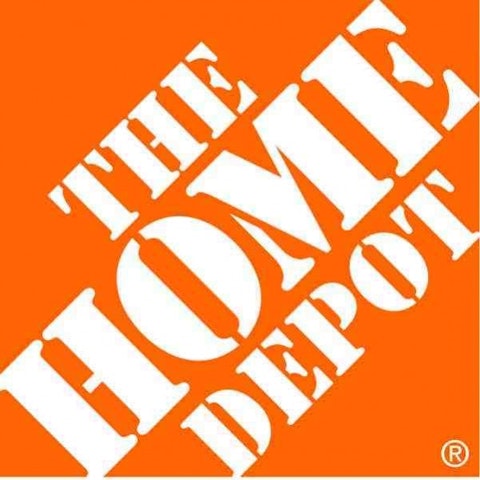Shares of The Home Depot, Inc. (NYSE:HD) and Lowe’s Companies, Inc. (NYSE:LOW), the two largest home improvement stores in the U.S., are trading near their respective 52-week high prices. With the stock market also trading near its 52-week high, the spring season a month or so away, and housing showing clear signs of improvement, it is worth taking a look at the common stocks of both companies. This article will discuss some of their valuation and fundamental measures, competitive positions, and prospects going forward.

Home Depot and Lowe’s, while similar companies, have different valuations and fundamentals. Home Depot has 1.5 billion shares for a market capitalization and enterprise value (EV) of $100.2 billion and $109 billion. Lowe’s has 1.1 billion shares outstanding and a market capitalization and EV of about $43.9 billion and $51.7 billion. As of Oct. 28, Home Depot had 2,250 stores with 274 stores located in Mexico and Canada compared to 1,750 stores for Lowe’s as of Nov. 2, of which 89% were company-owned. About 30 of Lowe’s store are located in Canada and four in Mexico (Lowe’s also has a 1/3 interest in an Australian joint venture with 23 stores). Below is a table that includes a number of valuation measures as well as fundamentals for Home Depot, Lowe’s, and the S&P 500 index.
| HD | LOW | S&P 500 | |
| Dividend yield | 1.7% | 1.6% | 2.2% |
| Price-to-earnings (2013) | 19.3 | 18.8 | 12.6 |
| EV/EBITDA (trailing) | 11.9 | 9.7 | n/a |
| PEG | 1.5 | 1.1 | 1.9 |
| EBITDA margin | 12.3% | 9.9% | 20.2% |
| Sales per store (YTD) | $8.1 million | $6.9 million | n/a |
| Inventory per store | $4.9 million | $5.1 million | n/a |
| Service as % of sales | 4.1% | 6.0% | n/a |
| Beta | 0.9 | 1.1 | 1 |
| Price-to-sales | 1.4 | 0.9 | 1.4 |
| Price-to-book | 5.7 | 3.1 | 6.8 |
| Average store size | 128,000 sq feet | 113,000 sq feet | n/a |
Source: Author’s calculations, SEC filings, Reuters; EBITDA – earnings before interest, tax, depreciation, and amortization; PEG – price-to-earnings-to-growth.
From the table above it seems like Home Depot shares are more expensive based on most valuation ratios. It also has a better EBITDA margin and a sales per store figure. However, Lowe’s derives a higher percentage of revenues from services, which offer higher value and indicate higher customer loyalty. Lowe’s common stock is also less expensive when accounting for its growth as signaled by its lower PEG ratio.
Competitive Position
Another possibility for the difference in valuation is that Home Depot seems to have a larger footprint and more initiatives. For example, Home Depot is usually in the news with initiatives to hire veterans and seasonal workers although both companies have similar initiatives. Due to Home Depot’s larger size it gets more media attention. This is in addition to internal improvements such as daycare for its employees in its Atlanta-based headquarters, offering customers and contractors the flexibility to obtain certain local permits directly from 12 stores in the Las Vegas area, and keeping a conservative balance sheet.
There are some developments that play into Lowe’s competitive advantage. For example, the company has more leverage than Home Depot and this should improve equity returns over time. In addition, Lowe’s repurchased $3.6 billion of its own shares for the nine-month period ending Nov. 2, compared to $3.3 billion for Home Depot. While more leverage could be dangerous in times of economic distress, it could help Lowe’s in the much anticipated economic recovery.
On the negative side, Lowe’s, according to one analyst, has stores that are at a disadvantage compared to Home Depot as they are situated further away from people. However, this could also be a negative for Home Depot as households in urban areas, such as large cities, are more affluent and outsource a larger portion of their projects.
While Lowe’s is less diversified internationally, it is likely to continue its expansion in Canada and Mexico even after its failed bid for Canada’s largest home improvement retailer, Rona, in 2012. At the same time, Home Depot’s unsuccessful attempt to expand in China cost the company $165 million and loss of reputation in 2012.
Conclusion
Lowe’s and Home Depot, while different in size, are the two largest home improvement retailers in the U.S. Their shares, based on a price to earnings ratio, are overvalued compared to the S&P 500 index. However, based on price to book and PEG, their shares still offer good value for investors.
The similarities between both companies outnumber their differences. For example, in September of 2011, Lowe’s equipped its store employees with iPhones and this move was followed by Home Depot in early 2013. And in appliances, both companies recently introduced the addition of LG (at Lowe’s) and Samsung (at Home Depot) to their product offerings. However, on a relative basis, shares of Lowe’s are less expensive. As such, they would likely catch up with Home Depot in an improving housing picture while also offering a larger margin of safety.
The article Side-by-Side Comparison of Two Home Improvement Retailers originally appeared on Fool.com and is written by Delian Naydenov.
Copyright © 1995 – 2013 The Motley Fool, LLC. All rights reserved. The Motley Fool has a disclosure policy.




